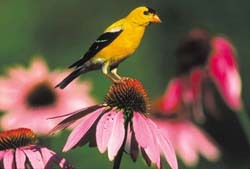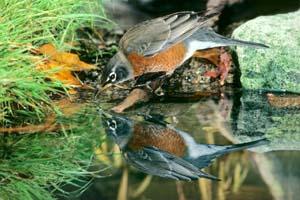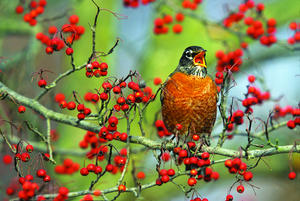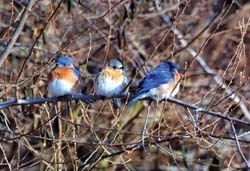False Migrators
There are many birds that are falsely believed to migrate. Customers ask us all the time when the American Robins will leave for the winter or when the American Goldfinches will return. To help you keep track of your favorite backyard birds, we have gathered the top three false migrators here:
American Goldfinches


Goldfinches are some of the brightest backyard birds during the spring and summer. Their bright yellow plumage is like a ray of sunshine at your feeder. However, when fall comes that bright yellow can be dangerous. It doesn't blend well with the snow and can make the birds very easy to spot by predators. Instead, goldfinches will molt into a duller, less-easy-to-spot color that is often described as being olive green. In their winter plumage, male and female goldfinches look very similar. So don't take down your feeder in the winter, your goldfinches might still be visiting incognito. As the temperature rises, they'll return to the vibrant yellow birds we all love!
American Robins


Robins are one of the most recognizable birds in people's backyards and are commonly believed to herald the return of spring. However, they don't migrate either! Robins eat primarily bugs in the spring, summer, and fall, so you will often see them hopping around your yard searching for worms or scouring plants for grubs. In the winter, however, bugs are more difficult if not impossible to find, so robins switch to eating fruit for the duration of winter. The same robin you saw in your backyard digging up earthworms will move to the crab apple tree out front and live off that all winter. As soon as the bugs start to stir, though, the robins will be back in your yard digging them up!
Eastern Bluebirds


Bluebirds are commonly thought to migrate shortly after nesting season, which is only partially true. They usually do leave their nesting sites, but they don't leave the area altogether. Bluebirds flock together in the winter into large groups that can include dozens of birds. This allows more birds to be looking for predators, food, and shelter, increasing the chance of survival of all the birds. Come spring, though, the flock splits apart to find nesting territories. While bluebirds might share their food and shelter during the cold winter months, they are not good neighbors in the spring and will fight each other over every resource. Typically your yard is either a good nesting habitat or a good winter habitat, but rarely both.

